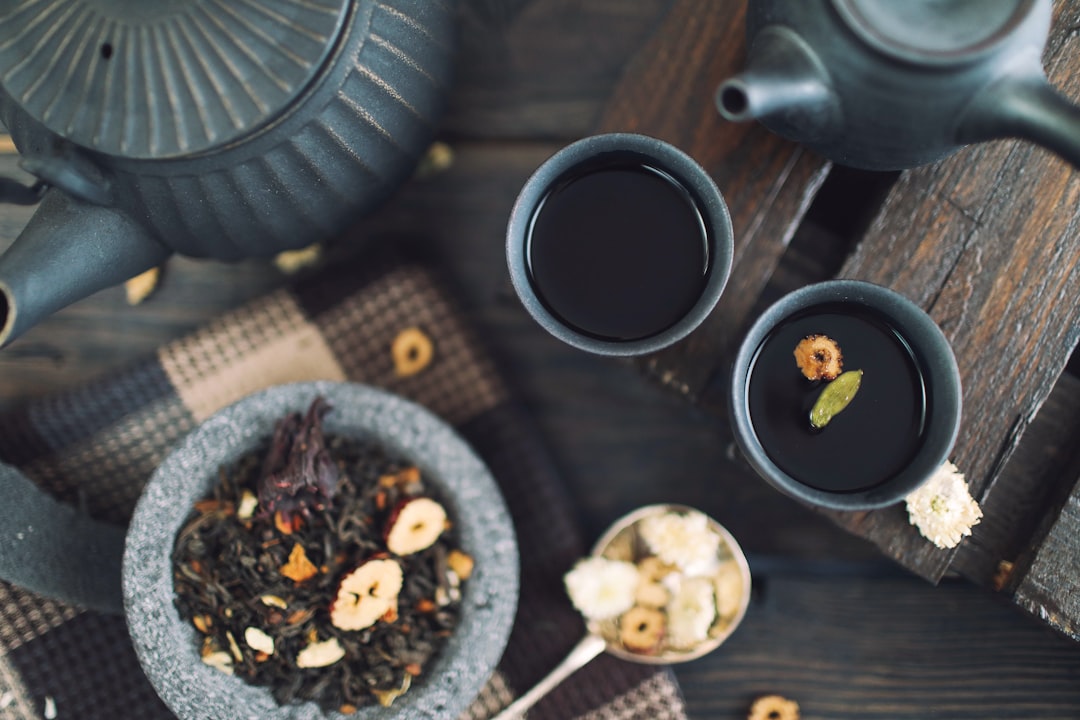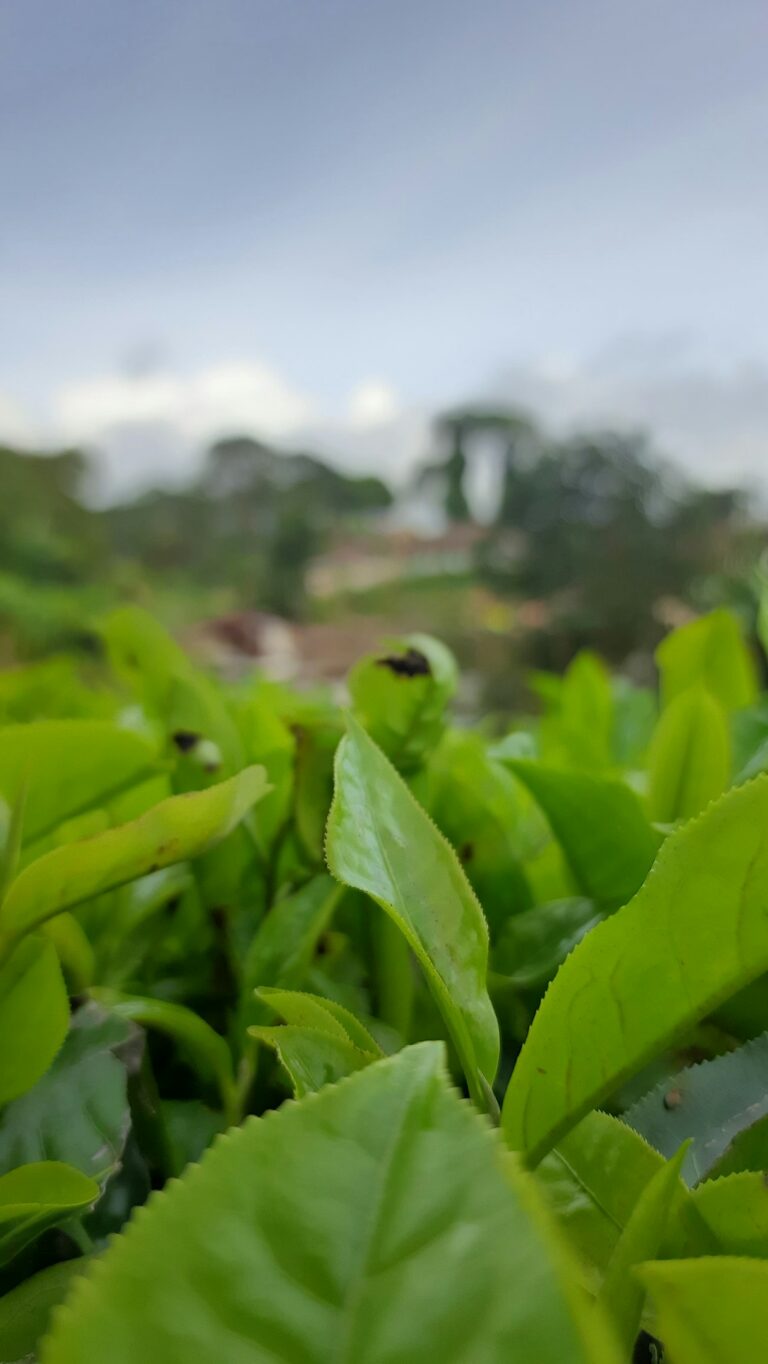Support our educational content for free when you purchase through links on our site. Learn more
[2023] Can Tea Grow in the US? A Comprehensive Guide to Tea Cultivation in America
Quick Answer: Yes, tea can grow in the US! In fact, tea cultivation is gaining popularity in various states across the country. With the right conditions and proper care, you can grow your own tea plants and enjoy the satisfaction of harvesting and brewing your own homegrown tea. Read on to learn more about tea cultivation in the US and how you can get started.
Table of Contents
- Quick Tips and Facts
- Background: Tea Cultivation in the US
- Tea Varieties Suitable for US Growing Conditions
- Ideal Climate and Soil for Tea Cultivation
- Growing Tea Plants
- FAQ
- Conclusion
- Recommended Links
- Reference Links
Quick Tips and Facts
- Tea can be successfully grown in the US, with several states now cultivating tea plants.
- The most suitable tea varieties for US growing conditions include Camellia sinensis sinensis and Camellia sinensis assamica.
- Tea plants thrive in regions with a temperate climate, well-drained soil, and partial shade.
- Growing tea requires patience and attention to detail, but the rewards are well worth it.
- You can purchase tea seeds or young tea plants from reputable nurseries or online suppliers.
- Regular pruning and proper harvesting techniques are essential for maintaining healthy tea plants.
- Tea leaves can be processed into various types of tea, including green, black, oolong, and white tea.
Ready to embark on your tea-growing journey? Let’s dive into the background of tea cultivation in the US and explore the steps to successfully grow your own tea plants.
Background: Tea Cultivation in the US
Tea has a long and rich history, with its origins in ancient China. However, you might be surprised to learn that tea cultivation is not limited to Asia. In recent years, tea production has been gaining momentum in the United States, with several states embracing the art of growing tea.
The first successful tea cultivation in the US dates back to the late 18th century when a group of South Carolina planters established the first tea plantation in the country. Unfortunately, due to various challenges, including the Revolutionary War and the difficulty of competing with cheaper imports, tea production in the US declined.
However, in recent years, there has been a resurgence of interest in growing tea locally. States such as South Carolina, Alabama, and Hawaii have seen a revival of tea cultivation, with dedicated farmers and enthusiasts working to establish thriving tea farms.
Tea Varieties Suitable for US Growing Conditions
To successfully grow tea in the US, it’s important to choose tea varieties that are well-suited to the local climate and growing conditions. The two main varieties of tea plants are Camellia sinensis sinensis and Camellia sinensis assamica.
-
Camellia sinensis sinensis: This variety is known for its smaller leaves and is commonly used for producing green and white teas. It thrives in cooler climates and is suitable for regions with colder winters, such as the northeastern states.
-
Camellia sinensis assamica: This variety has larger leaves and is often used for producing black and oolong teas. It is more tolerant of warmer temperatures and is suitable for regions with milder winters, such as the southern states.
When selecting tea plants for your garden, consider the climate and growing conditions in your specific region. Consult with local nurseries or tea experts to determine the best variety for your area.
Ideal Climate and Soil for Tea Cultivation
Tea plants thrive in regions with a temperate climate, well-drained soil, and partial shade. Here are some key factors to consider when choosing a location for your tea garden:
-
Temperature: Tea plants prefer temperatures between 50°F (10°C) and 85°F (29°C). Extreme heat or cold can stress the plants and affect their growth and productivity.
-
Sunlight: While tea plants require some sunlight, they also benefit from partial shade, especially during the hottest part of the day. Consider planting your tea garden near trees or structures that provide partial shade.
-
Rainfall: Tea plants require a consistent water supply, ideally receiving around 60 inches (152 cm) of rainfall per year. If your region experiences lower rainfall, you may need to supplement with irrigation.
-
Soil: Tea plants thrive in well-drained soil with a slightly acidic pH level between 6 and 6.5. Conduct a soil test to determine the pH level and make any necessary amendments to create the ideal growing conditions.
Growing Tea Plants
Now that you have a good understanding of the background and requirements for tea cultivation in the US, let’s explore the steps involved in growing tea plants.
Planting Tea Seeds
-
Choose high-quality seeds: Purchase tea seeds from reputable nurseries or online suppliers. Look for seeds that are fresh and viable for the best chances of successful germination.
-
Prepare the planting area: Clear the planting area of any weeds or debris. Ensure the soil is well-drained and has been amended with organic matter if necessary.
-
Sow the seeds: Plant the tea seeds in pots or seed trays filled with a well-draining potting mix. Sow the seeds at a depth of approximately 1/4 inch (0.6 cm) and cover lightly with soil.
-
Provide optimal conditions: Place the pots or trays in a warm, well-lit area, such as a greenhouse or a sunny windowsill. Maintain a consistent temperature between 70°F (21°C) and 85°F (29°C) and keep the soil moist but not waterlogged.
-
Transplanting: Once the seedlings have developed several sets of true leaves, they can be transplanted into larger pots or directly into the ground. Ensure the planting area has the ideal conditions mentioned earlier.
Caring for Tea Plants
-
Watering: Tea plants require regular watering, especially during dry periods. Aim to keep the soil consistently moist but not waterlogged. Mulching around the base of the plants can help retain moisture.
-
Fertilizing: Tea plants benefit from regular fertilization to ensure healthy growth. Use a balanced, slow-release fertilizer or organic alternatives, following the manufacturer’s instructions.
-
Pruning: Regular pruning is essential for maintaining the shape and health of tea plants. Prune back any dead or diseased branches and shape the plants to encourage bushier growth.
-
Pest and disease control: Monitor your tea plants for common pests such as aphids, mites, and caterpillars. Use organic pest control methods whenever possible to minimize the use of chemicals.
Harvesting and Processing Tea Leaves
-
Timing: Tea leaves are typically harvested when they are young and tender, usually in the spring or early summer. The exact timing will depend on the tea variety and your specific growing conditions.
-
Plucking: Use your fingers or small shears to pluck the top two leaves and the bud from each tea shoot. This is known as the “flush.” Avoid damaging the remaining leaves and buds on the plant.
-
Processing: The processing method will depend on the type of tea you want to produce. Common methods include withering, rolling, oxidizing (for black tea), and drying. Research the specific processing techniques for the type of tea you wish to make.
-
Enjoying your homegrown tea: Once the tea leaves are processed and dried, they are ready to be brewed and enjoyed. Experiment with different brewing methods and find the perfect cup of tea that suits your taste.
FAQ
Where can tea grow in the US?
Tea can be grown in various states across the US, including South Carolina, Alabama, Hawaii, and parts of California, Oregon, and Washington. However, it’s important to choose tea varieties that are suitable for the specific climate and growing conditions in your region.
Read more about “What Tea Can You Grow at Home? …”
What is the only state in the US that grows tea?
South Carolina is often referred to as the “only tea-growing state” in the US. It has a long history of tea cultivation and is home to several tea plantations.
Read more about “What is the only state in the US that grows tea?”
In what two states can tea plants grow in the United States?
Tea plants can grow in various states, but two states that are particularly well-suited for tea cultivation are South Carolina and Alabama. These states have the ideal climate and soil conditions for growing tea.
Read more about “Can You Grow Tea Plants in the US? …”
Is tea or coffee grown in the US?
Both tea and coffee can be grown in the US, although they are primarily produced in different regions. Tea is grown in states such as South Carolina, Alabama, and Hawaii, while coffee is mainly cultivated in Hawaii, California, and Puerto Rico.
Conclusion
Tea cultivation in the US is a growing trend, with enthusiasts and farmers embracing the art of growing their own tea plants. With the right climate, soil conditions, and proper care, you can successfully grow tea in your own backyard. Whether you’re a tea lover or simply enjoy gardening, growing your own tea plants can be a rewarding and fulfilling experience.
Remember to choose tea varieties that are suitable for your region, provide the ideal growing conditions, and follow proper planting, care, and harvesting techniques. With patience and dedication, you’ll soon be sipping on delicious cups of tea made from your very own homegrown leaves.
Recommended Links
- Shop Tea Seeds on: Amazon | Walmart | Etsy
- Shop Tea Plants on: Amazon | Walmart | Etsy
- Shop Tea Brewing Accessories on: Amazon | Walmart | Etsy
Looking for more information on tea cultivation? Check out these related articles on Growing Teas™:
- What Tea Can You Grow at Home?
- Green Tea Cultivation
- Herbal Tea Planting
- Tea Plant Varieties
- Soil and Climate for Tea
Reference Links
- Tea production in the United States – Wikipedia
- Camellia sinensis – The Plant List
- Growing Tea Plants – University of California Agriculture and Natural Resources
- Tea Planting and Production Guide – Alabama Cooperative Extension System
- Tea Production in the United States – University of Florida IFAS Extension





